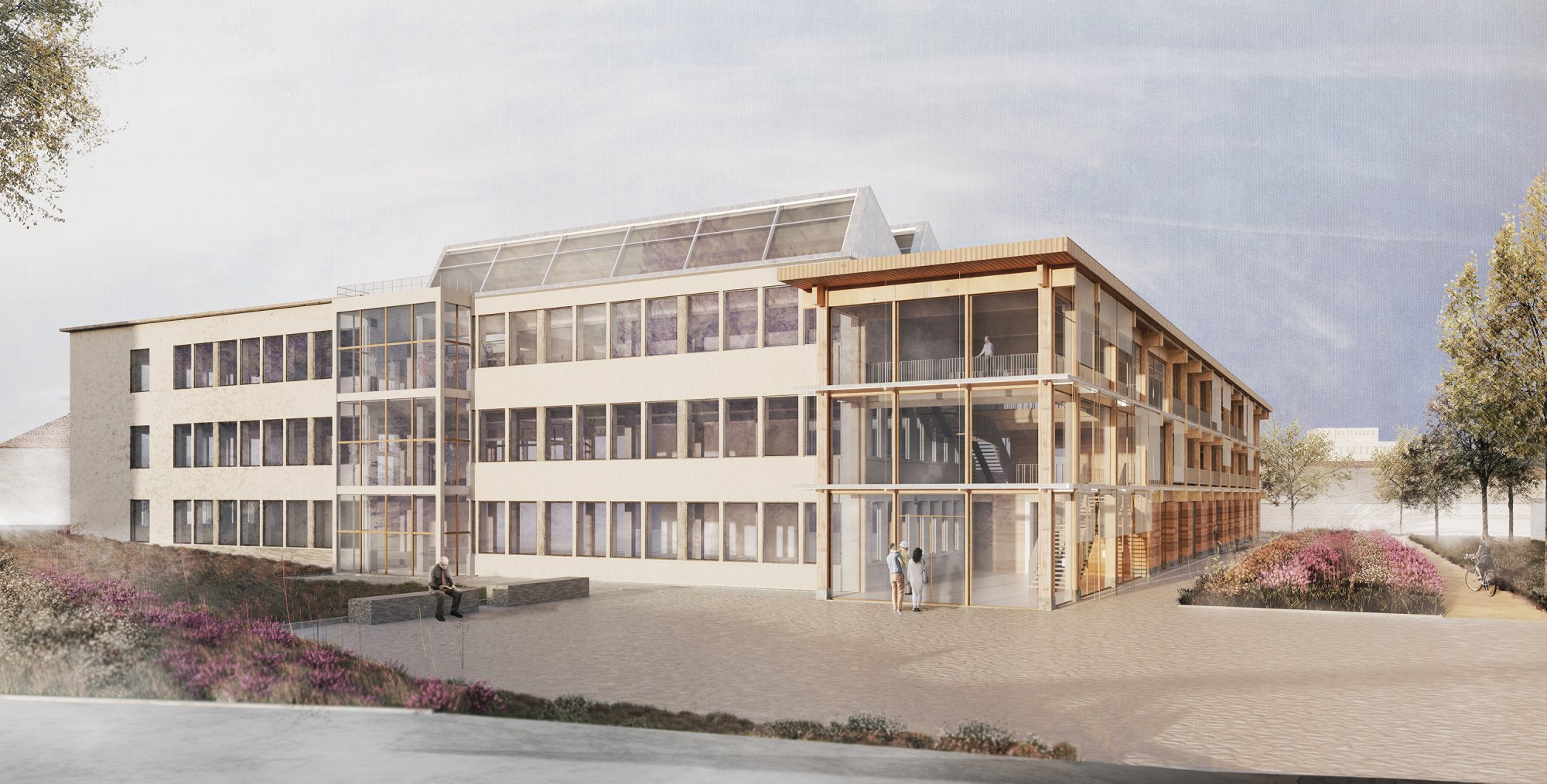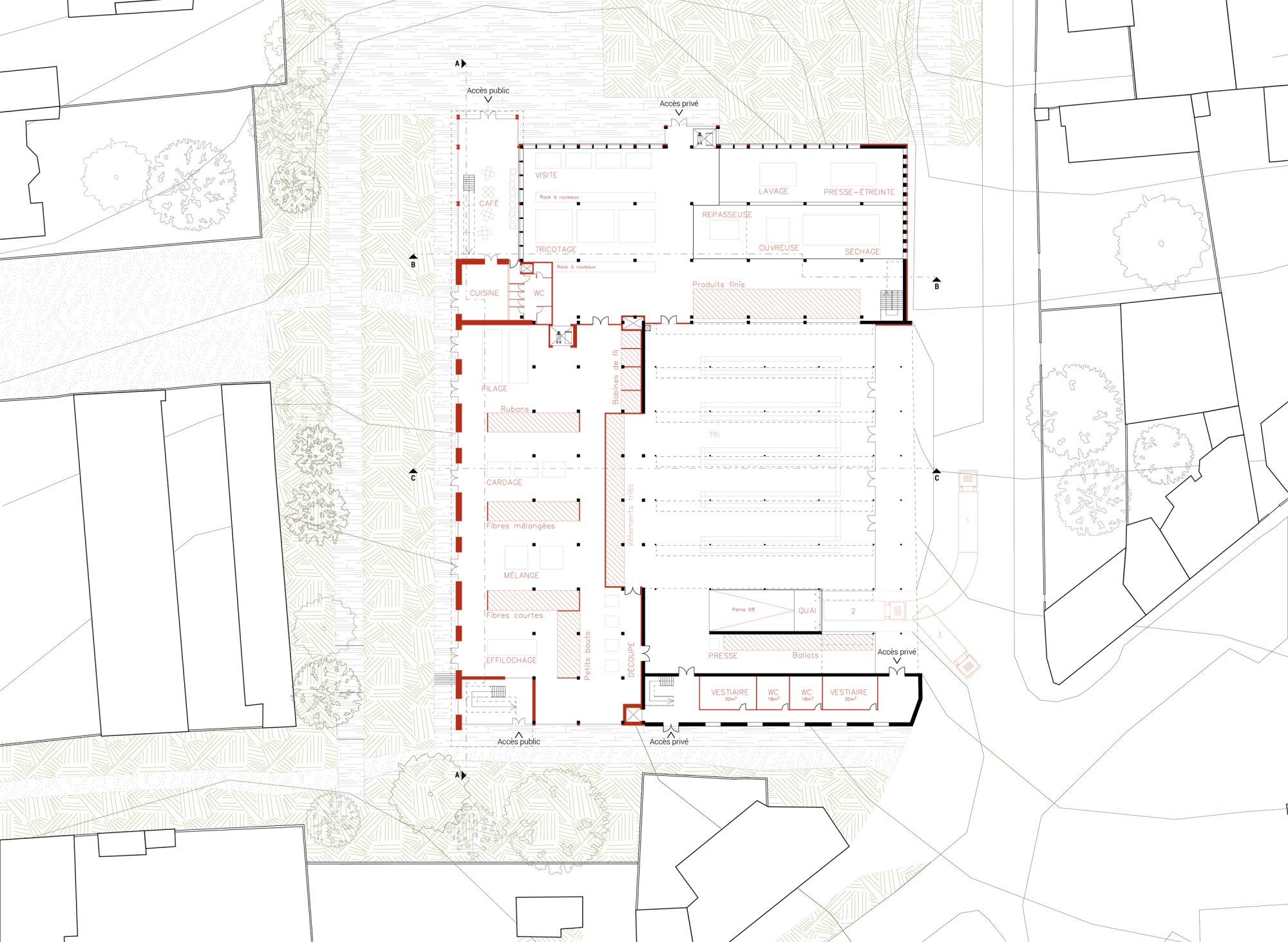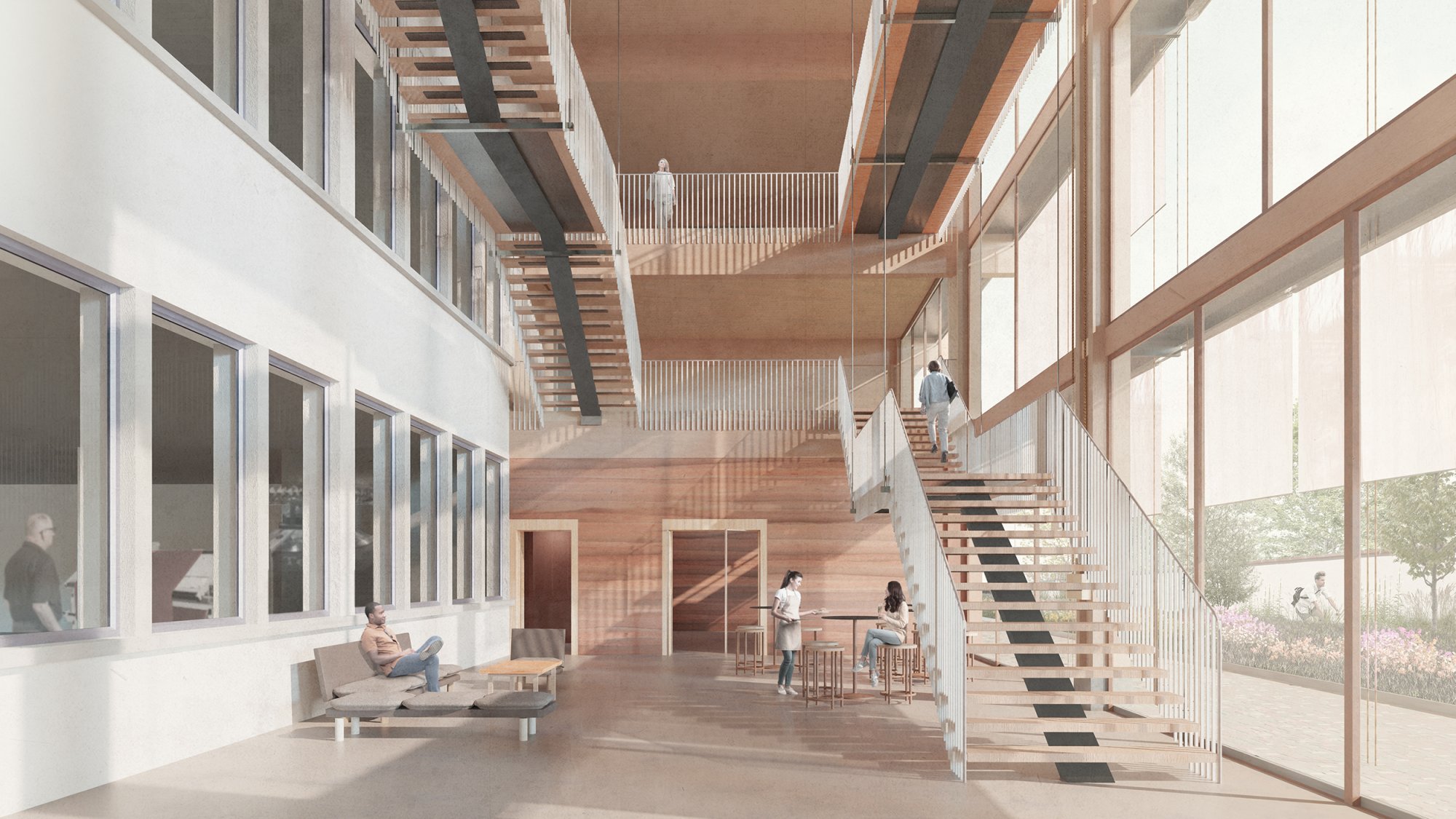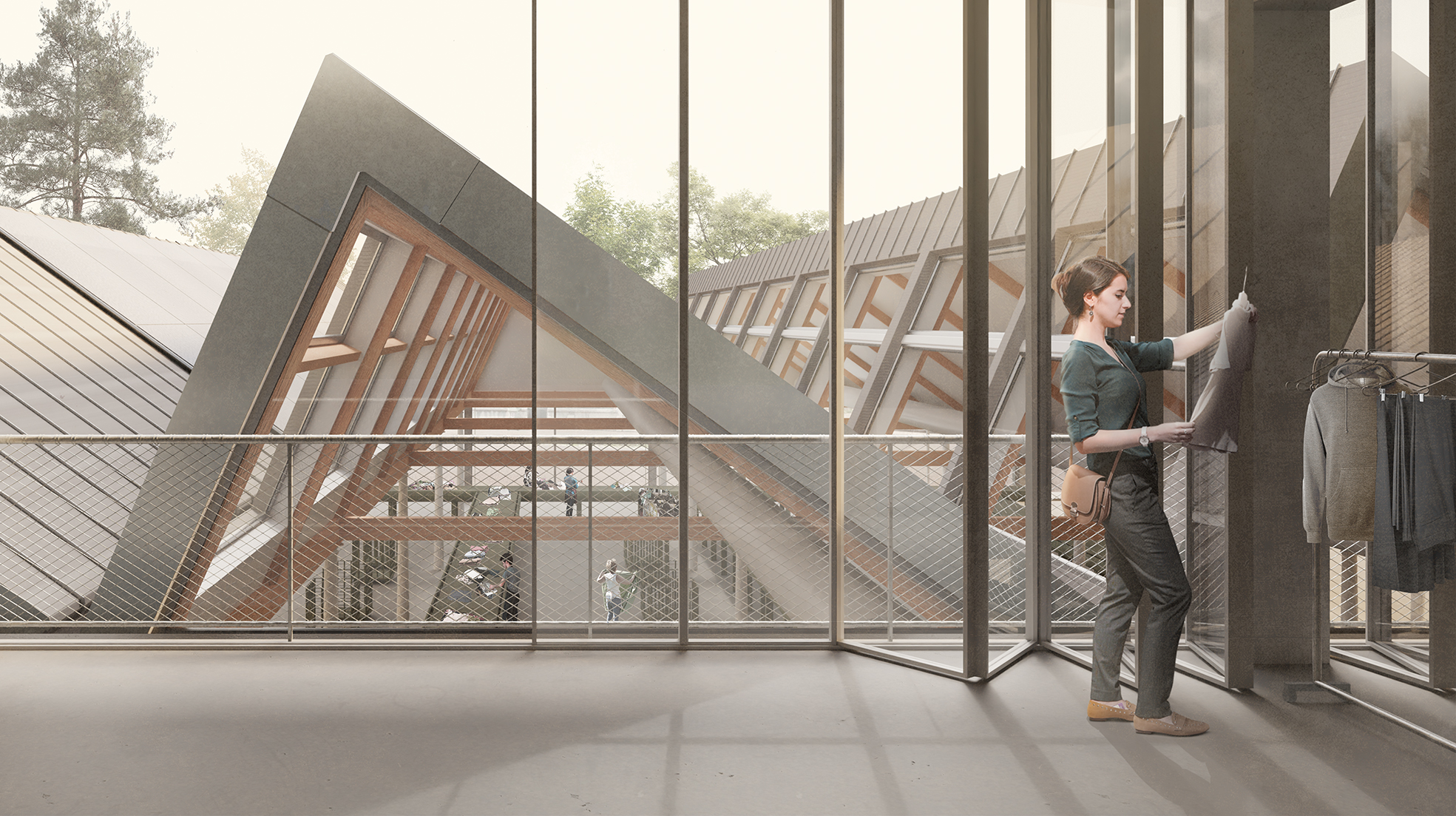Colin Dhondt
TISSER : la ville par l’industrie de demain
L’industrie du textile actuelle, de par son modèle mondialisé, ses pratiques destructrices et ses volumes de production dramatiques, est responsable d’une catastrophe écologique, sociale et humaine à l’échelle mondiale. Face au changement climatique auquel nous faisons face, il est nécessaire de la remettre en question et d’imaginer de nouvelles manières de produire, qui soient plus résilientes, plus pérennes et plus saines pour notre environnement.
Ce Projet de Fin d’Études a donc pour problématique l’implantation en France d’une activité de fabrication textile qui saura répondre à ces enjeux. Il se place pour cela à Romans-sur-Isère, dans la Drôme, une ville historiquement étroitement lié à l’artisanat puis à l’industrie des textiles. C’était au XXème siècle un haut lieu de la production de chaussures. Le modèle économique de cette industrie, devenue mono-industrie, s’effondre à la fin du XXème siècle, la fermeture des nombreuses usines bouleverse alors la vie économique et sociale du territoire tandis que leur destruction transforme le paysage urbain.
Aujourd’hui, l’usine Charles Jourdan est la dernière usine historique de chaussures encore présente à Romans. Abandonnée depuis 2007, elle est vouée à être bientôt détruite, en l’absence de volonté de reconversion de la part de la municipalité.
Pourtant, le caractère patrimonial de ce bâtiment est pour moi certain, de par son architecture, sa mémoire et son lien avec l’histoire de la ville et de ses habitants.
L’usine, construite il y a un siècle aux abords d’une ville alors bien plus petite que de nos jours, est à présent située en plein centre-ville, au coeur d’une fracture urbaine où plusieurs éléments (topographie, circulation automobile, vacance de l’espace, morphologie urbaine) entrent en jeu pour créer une situation complexe, avec de forts potentiels d’amélioration et de reconnexion de l’espace public qui vont au délà des considérations architecturales liées à la parcelle de l’usine.
Le projet a pour objectif premier de réhabiliter le bâtiment abandonné qu’est l’usine, en y réimplantant une activité industrielle en adéquation avec les considérations énoncées. L’architecture imaginée doit valoriser ce patrimoine en péril tout en proposant une nouvelle vision de l’usine, qui s’intègre pleinement dans un centre-ville actif et qui prend en compte les problématiques urbaines existantes à une échelle plus large. Le traitement des questions urbaines que requière la position stratégique et unique du site dans la ville fait donc également partie du projet, dans un deuxième temps.










